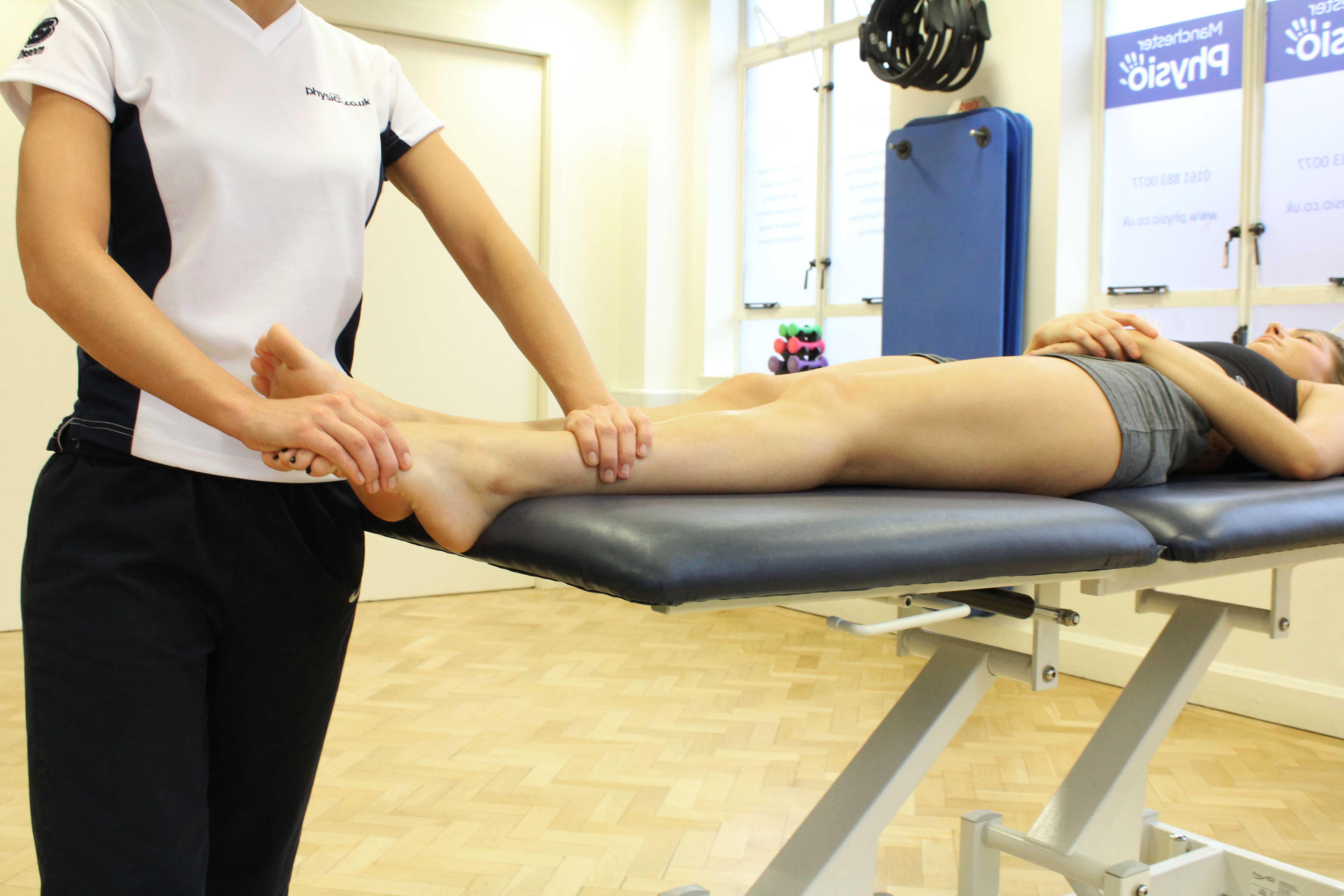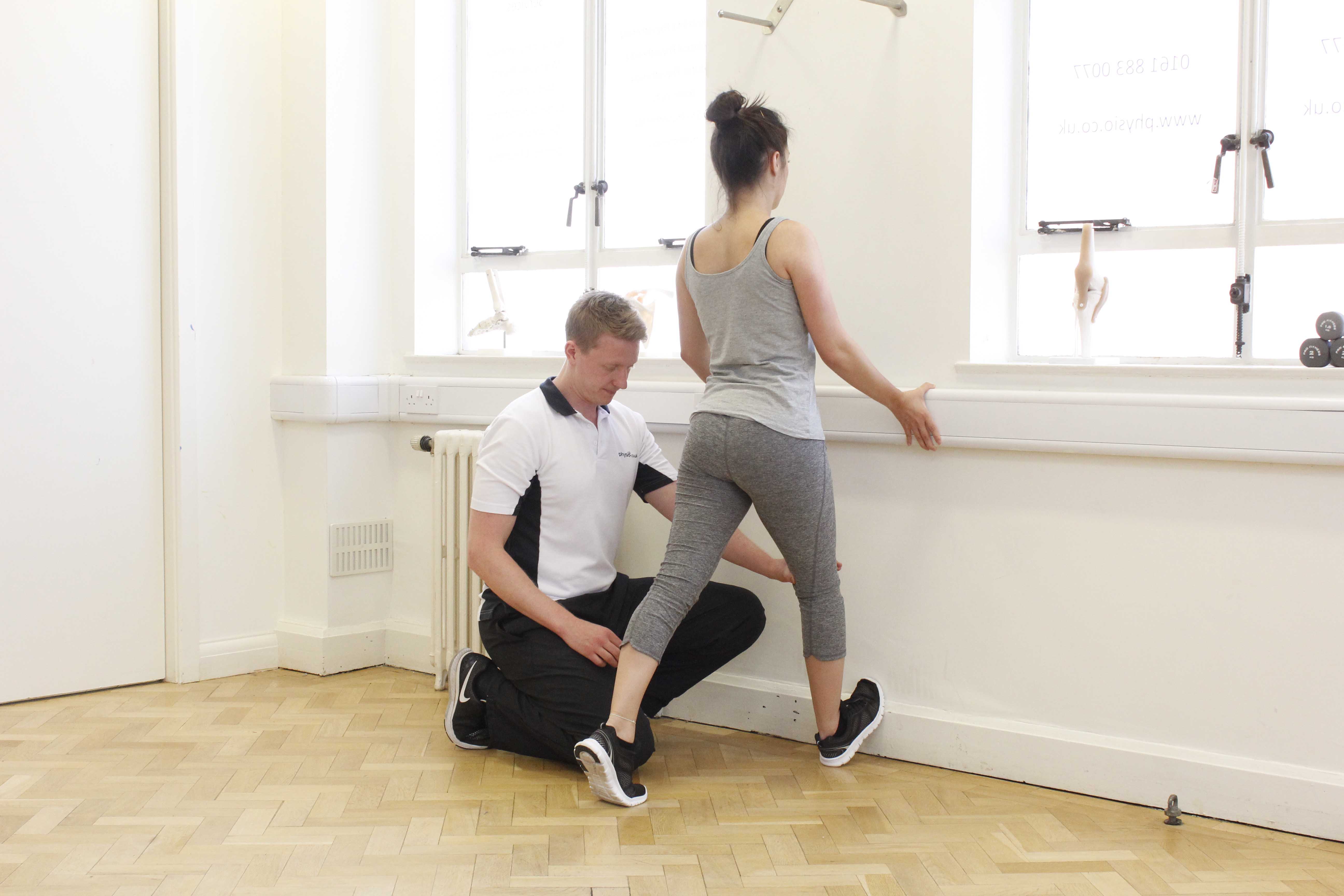What is a sprained ankle?
A sprained ankle (also known as a twisted ankle) commonly causes a tear within one or more of the ligaments of the ankle. The ligaments provide support to the ankle joint. The most common injury is to the ligaments on the outside of the ankle (lateral ligament complex). The ligaments on the inside of the ankle (medial ligament) can also be injured. Physiotherapy is a successful treatment for a sprained ankle.
How does a sprained ankle happen?
Ligaments are injured (or sprained) when they are overstretched (sprained). An injury to the lateral ligaments is commonly caused when the foot and ankle are forcibly turned inwards. An injury to the medial ligaments is commonly caused when the foot and ankle are forcibly turned outwards. The ankle is commonly sprained whilst walking on uneven surfaces or unexpectedly stepping on an object.
 Above: Passive stretch of the connective tissues in the foot and ankle by experienced therapist
Above: Passive stretch of the connective tissues in the foot and ankle by experienced therapist
What are the symptoms of a sprained ankle?
A sprained ankle causes pain in the ankle. There may also be an audible snap, crack or tear as the foot is turned inwards or outwards. Depending on the severity of the injury, the ankle may become swollen and you may have difficulty walking due to pain. Other symptoms include:
What should I do if I have a sprained ankle?
You can speed up your recovery from a sprained ankle by following the simple RICE regime over the first 24–48 hours. Swelling is necessary for the injury to heal; however, too much swelling can delay healing. The RICE regime (Rest, Ice, Compression, and Elevation) reduces blood flow to your injured ligament and, therefore, can reduce swelling. Rest involves limiting the amount of weight you put through your ankle. The use of crutches may be required if you are having difficulty walking. Ice should be applied to the knee for 15–20 minutes every 1–2 hours. It should be applied using a bag of frozen peas or crushed ice wrapped in a damp cloth. Compression involves the application of an elastic bandage around the injury site. It should be firm but not tight. Elevation involves lying with your ankle resting on a chair or pillows so that it is above the level of your heart. You should continue the RICE regime until you have been assessed by a physiotherapist. This should ideally be within the first 48 hours of the injury.
What shouldn’t I do if I have a sprained ankle?
If you have sprained your ankle you shouldn’t undertake activities which may increase blood flow to the injured site and, therefore, swelling to the area. These include hot showers, heat rubs, alcohol and excessive activity.
 Above: Active stretches of the foot and ankle performed under supervision by a specialist MSK physiotherapist
Above: Active stretches of the foot and ankle performed under supervision by a specialist MSK physiotherapistCould there be any long-term effects from a sprained ankle?
Most sprained ankles heal without complication in four to six weeks. However, depending on the severity of the injury, some sprained ankles can cause longer-term effects. When you sprain your ankle, a number of other structures besides the ligaments can also be injured. This includes bone, cartilage, muscle and tendons. Injuries to these structures can complicate and slow recovery. If left untreated a sprained ankle may cause long standing reduced range of movement, weakness and an increased chance of reinjuring the ankle.
Physiotherapy treatment for a sprained ankle.
After the initial RICE treatment, the aim of physiotherapy treatment is to restore the ankle to full function. This involves restoration of full range of motion, strengthening the muscles around the ankle, improving the balance (proprioception) with specific exercises and graduated return to full activity. Other treatments can include: Your physiotherapist will also be able to advise you on appropriate preventive measures when you return to normal activity, such as the use of ankle taping or ankle supports.
To arrange a physiotherapy appointment call Physio.co.uk on 0330 088 7800 or book online.

 0330 088 7800
0330 088 7800

































